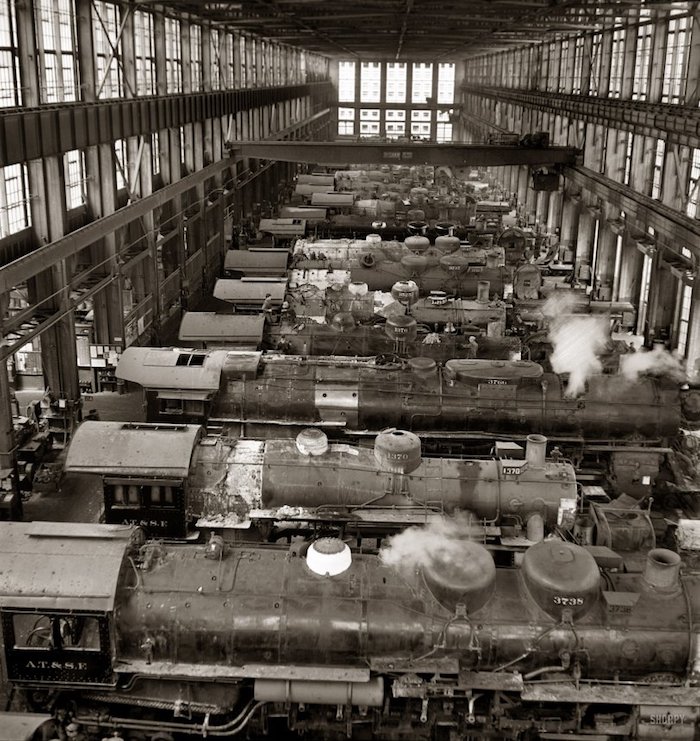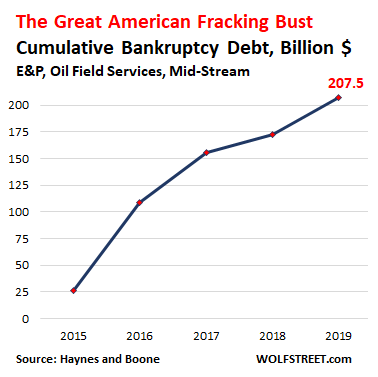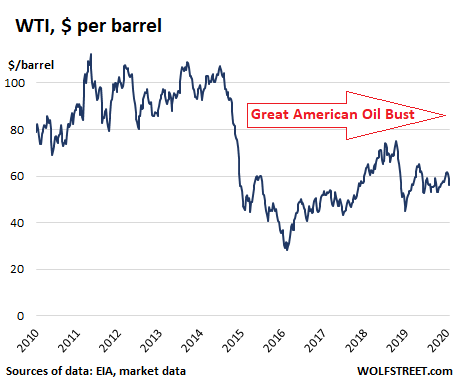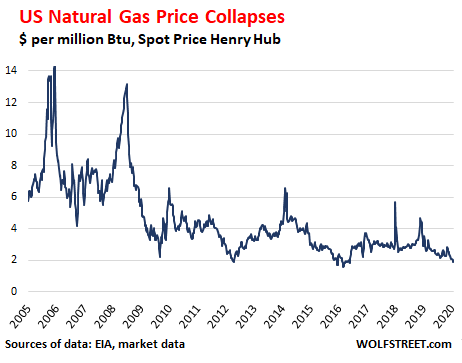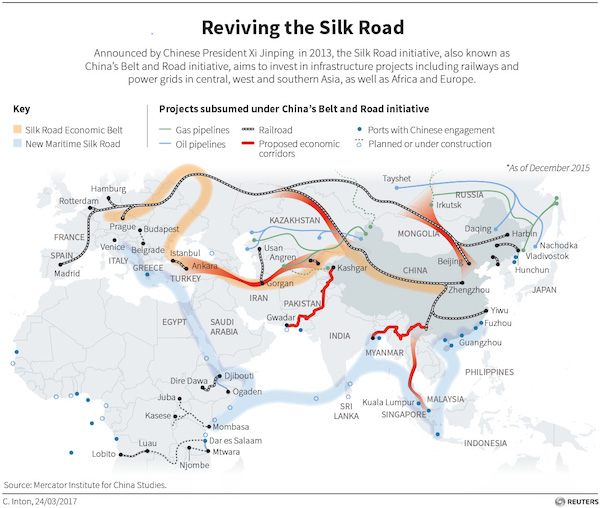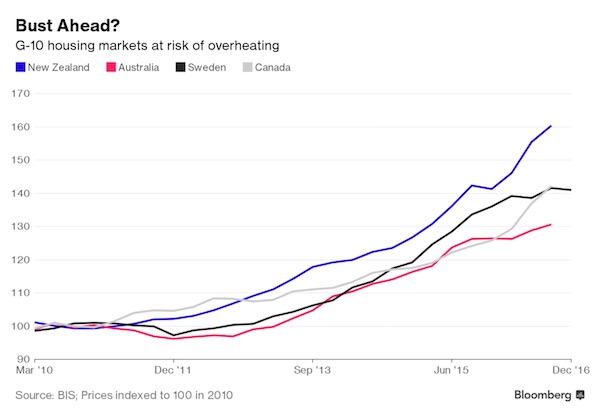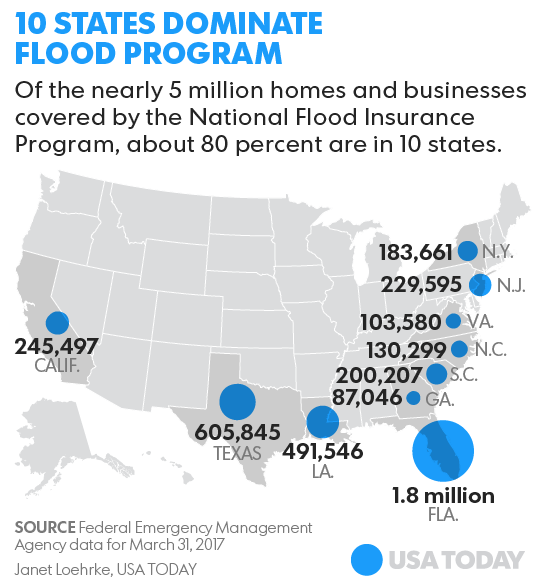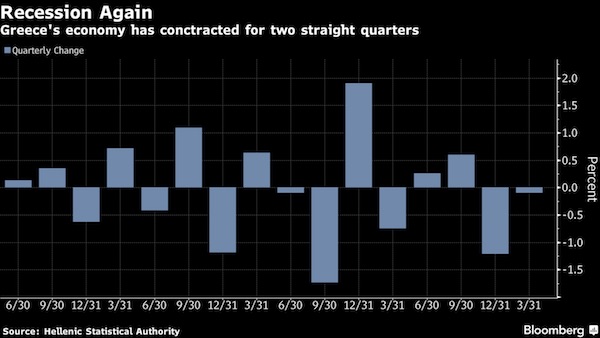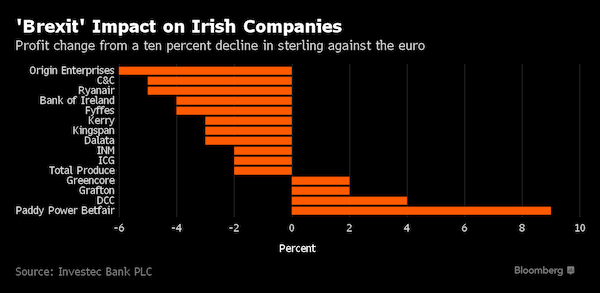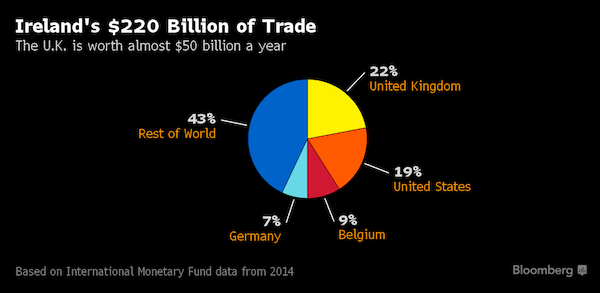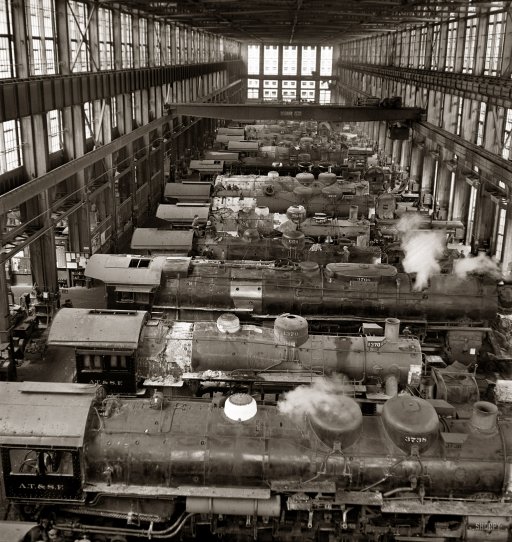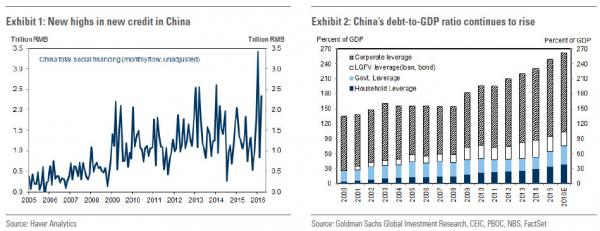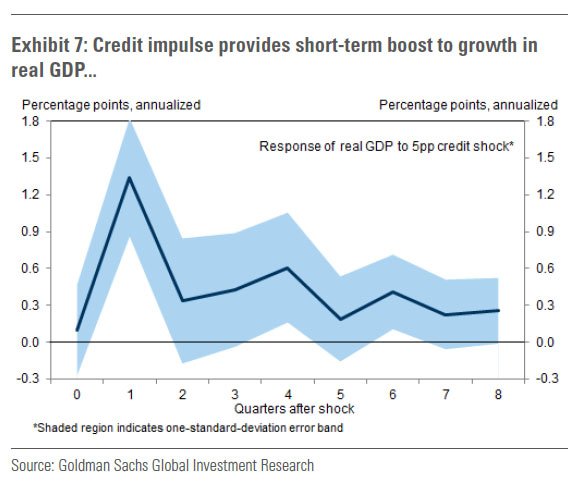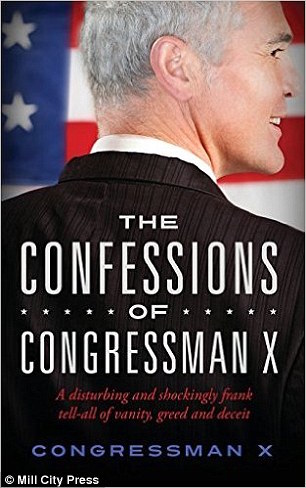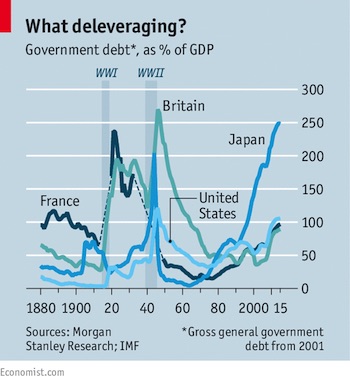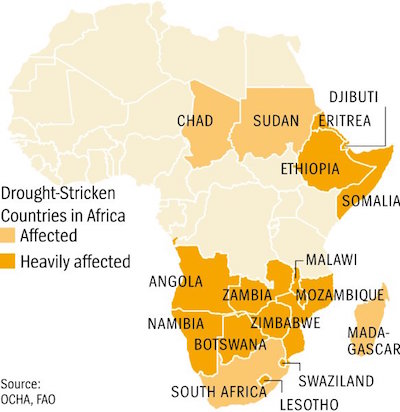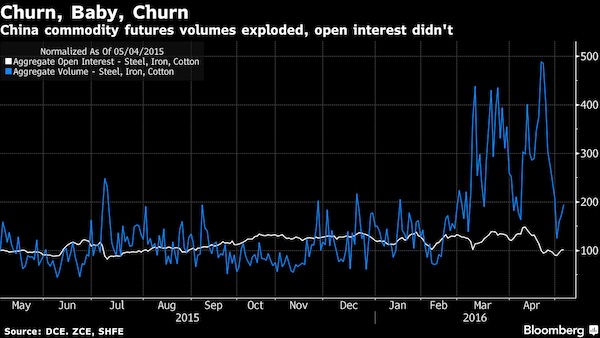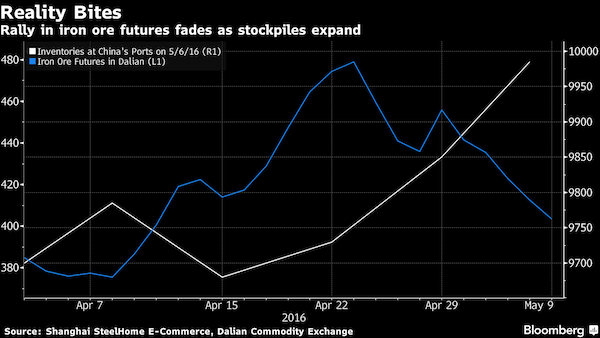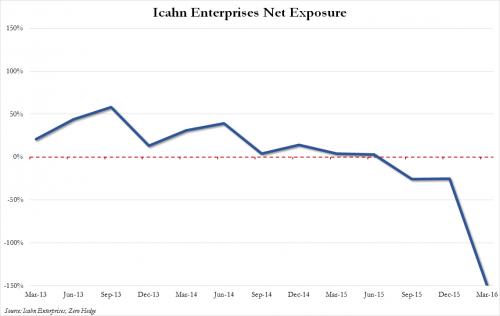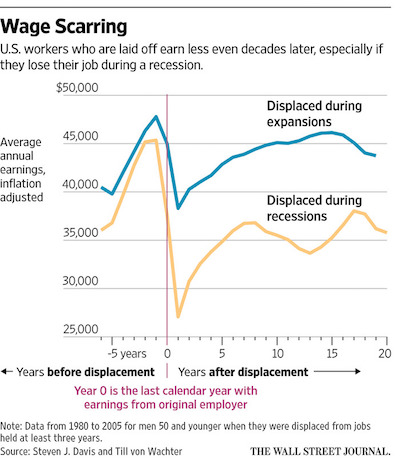
Christopher Helin Service truck at Dodd warehouse, San Francisco 1919
Increasingly, the way the ‘booming recovery’ is presented to the public is so out there you could be pardoned for thinking someone is getting desperate. Like, really? Let’s start off with US housing. Here’s a few tidbits from a piece on Bloomberg today, and then we’ll compare that with something that’s 180º different, and I strongly suggest you be the judge. It’s not like you’ll be needing me to do the judging for you (not that you ever do, that’s not what I mean). I’ll give you a fair bit of quotes, just so you get a real good idea what exactly the picture is Bloomberg tries to paint here:
Housing to Outrun Capital Spending in Next Leg of US Growth
Residential investment grew at a 7.2% annualized rate in the second quarter and business outlays for equipment, structures and intellectual property rose at an 8.4% pace. Longer-run projections from Goldman Sachs show home construction will grow 10% to 15% by 2015-2016, while capital spending eases to about 5%. It’s a reminder of how “very different” this recovery is, Chief Economist Jan Hatzius said in an e-mailed response to questions.
“Normally, people think of housing as an early-cycle sector and capex as a late-cycle sector,” New-York based Hatzius said. “It is quite unusual for a housing recovery to lag a capital-spending recovery.” Given housing’s far-reaching ripple effects, an upturn in homebuilding would bring about a more viable expansion, and one that has a longer life, according to Ellen Zentner, a senior economist at Morgan Stanley in New York. Business outlays are more exposed to the ups and downs of global markets and tepid U.S. demand.
“Rather than waiting, waiting, waiting for an acceleration in capex, maybe modest growth is as good as it gets,” Zentner said. On the other hand, “we still have a lot of recovery left in housing.”
Homebuilding, which accounts for about 3% of gross domestic product compared with about 12% for capital spending, matters because of its “broader linkages that will feed back into the economy” to spur household spending, wealth, hiring, and confidence, said Michelle Meyer, senior U.S. economist at BofA.
So far, though, housing has yet to provide the “typical jolt,” she said. Residential investment has added 0.15% to GDP on average since the recovery began in June 2009. Business spending contributed 0.59 point. “It’ll be a bumpy housing recovery, but the path is higher,” Meyer said, citing tailwinds from improving employment, credit and historically low mortgage costs. “We just don’t have the housing stock we need to meet demand. Housing has by no means plateaued here.”
Companies will find reason to invest in the U.S. in the next decade, said Joe Carson, AllianceBernstein LP’s director of global economic research. The economy-wide spillover from the domestic energy boom is still nascent, state governments have a growing ability to fix aging infrastructure, and companies “will have to invest to grow” in order to boost profits, he said. All this will “unleash a powerful cycle” for business investment, helping stem the productivity slowdown that has restrained growth, Carson said.
The housing market probably has more potential. Beginning home construction has averaged a 976,000 annualized pace this year. Longer term, the demand for new houses may reach 1.5 million to 1.6 million a year, in part because millennials, those born after 1980, will start families and become more open to homeownership, according to Goldman Sachs analysts. Luxury-home builder Toll Brothers Inc. is hoping for better times ahead even as fragile consumer confidence and limited wage growth have led to “choppy seas and a sloppy boat ride” so far in this recovery, Robert Toll, the Horsham, Pennsylvania-based company’s chairman, said.
Based on trends over more than 40 years, “the industry should be building 50% more homes this year than its current pace to meet the increased population demographics,” Toll said on a Sept. 3 earnings call. “At some point, this pent-up demand will be released, which will add momentum to the entire housing market.”
That sounds boomy, doesn’t it? We’re preparing for lift-off, that’s what that says. But then Martin Andelman, aka Mandelman, had this a month ago on Aaron Krowne’s ML Implode site, h/t Dave Stockman. And then the picture changes, and looks, let’s say, somewhat different. Long quotes again, I’m sorry, but it’s because Mandelman is such a great writer.
Mortgage Originations Are Down by 60-70% Year-Over-Year… But Everything’s Okay
Mortgage originations for the first quarter of this year fell off a cliff. JPMorgan reported a decline of 71%, as I recall, and I think Citibank reported a drop of 66%. Now, the second quarter’s bloodletting has come in and the numbers are about the same… down more than 60% year-over-year, if memory serves and it often does. I’m not bothering to look any of these numbers up and doing this by memory because the details don’t matter… my point will be the same regardless of a few%age points in one direction or another on any given statistic. I’m close enough in all cases, anyway.
Forbes reported that the first quarter of 2014, “saw the lowest mortgage origination volumes since Q3 1997.” And the headline, “MBA Lowers Mortgage Originations Forecast”, came with a story explaining that “the updated refinance total is around 60% lower than 2013 refinance originations.” Even credit unions went straight into the tank this year, originating an annualized $42.6 billion in real estate loans in the first quarter, down from $102.9 billion in the first quarter of 2013, according to an Nation Credit Union Association (NCUA) press release.
Black Knight Financial Services released in March that loan originations were down 60% year-after-year, declining to the lowest level since November of 2008. And on August 12th, Origination News ran the headline: “The Refi Boom is Officially Over – And Won’t return Soon,” explaining that Freddie Mac has finally recognized that the refinancing boom that ended last summer… has ended… last summer… and that home sales this year have remained “lackluster.”
The Mortgage Bankers Association released its first 2014 forecast last October, predicting $1.2 trillion in total originations for the year, but those numbers were revised down in January and again in May. The current forecasts are for $1.01 trillion in total origination volume for the year. Last year total volume was $1.8 trillion, and $1.1 trillion of that volume came in the form of refis.
And finally, HARP origination volume has been down a staggering 70% year-over-year with only one third as many eligible loans remaining as compared with 2013. Estimates are that cash sales are running at 40% of sales, which combined with the data provided above, should tell you how few sales there actually are in the aggregate. My grandmother would say the mortgage industry is furchtbar, I would use a similar sounding word also beginning with the letter “F,” but we’d mean roughly the same thing.
Now, name another industry that’s ever seen year-over-year drops in sales volume like that. I’ve been trying to come up with one… maybe typewriter sales in 1996, 1987 or 1988? I don’t actually think there has ever been an industry that reported year-over-year declines in sales volume of 70%, and if there was, I’m betting the industry became the corporate equivalent of the Dodo bird sometime shortly after that.
In April of this year, the New York Times ran a story about, “Why the Housing Market is Still Stalling the Economy.” The author seemed to think housing is pretty darn important to our economic growth or malaise.
“Investment in residential property remains a smaller share of the overall economy than at any time since World War II, contributing less to growth than it did even in previous steep downturns in the early 1980s, when mortgage rates hit 20%, or the early 1990s, when hundreds of mortgage lenders failed.” “If building activity returned merely to its postwar average proportion of the economy, growth would jump this year to a booming, 1990s-like level of 4%… The additional building, renovating and selling of homes would add about 1.5 million jobs and knock about a%age point off the unemployment rate… That activity would close nearly 40% of the gap between America’s current weak economic state and full economic health.”
You don’t need to be any sort of economist to understand that people forming households would be a major driver of any country’s economic growth, right? I mean, all you’d have to do is look in my garage to figure out why that would be the case. If I weren’t married, I might not even own a full set of dishes. So, if household formation is running at 569,000 annually for the last 4-5 years, but was 1.35 million for the prior five years… well, how is everything okay?
So, the mortgage industry has seen originations fall in a single year by 60-70%, but the housing markets are okay, in fact they’re recovering all around us every day, and prices are up. Mortgage originations get more than cut in half over six months, but everything’s okay… GDP is still rising and the June jobs report was strong… because obviously the mortgage industry and housing doesn’t contribute to any of it. But that can’t be right, can it?
Any industry that experienced a 70% drop in sales would see bankruptcies popping like popcorn, but not this one. Not this industry… not mortgage originators. Somehow housing and mortgages have been painted with invisible ink, and can no longer be seen by anyone.
So there’s your US recovery, and as I said, you be the judge. Do we still have a lot of recovery left, or does a 60-70% drop in mortgage originations basically doom the industry?
Tokyo based Bill Pesek had a nice piece at Bloomberg of all places, about Australian real estate. He has Oz Treasurer Joe Hockey claim that “fundamentally, we don’t have enough supply to meet demand.” As if, fundamentally, nothing matters other than available ‘products’, as if available wealth or income don’t matter.
Irrational Exuberance Down Under
In “Australia: Boom to Bust,” Lindsay David sounds the alarm about an Australian housing bubble he argues makes the 12th-biggest economy a giant Lehman Brothers. His thesis can be boiled down to the number 9 – the ratio of home prices to income in Sydney. The multiple compares unfavorably with 7.3 in London, 6.2 in New York and 4.4 in Tokyo (Melbourne is 8.4).
Housing is one of the three pillars of the Australian economy, along with financial institutions and natural resources. Politicians and investors alike, David writes, don’t get “how deeply intertwined and connected” these sectors are and “how they can easily take each other down in a domino effect.” The most obvious trigger would be a Chinese crash that simultaneously hits bankers, miners and households hard.
I caught up with David last week in Sydney at a Bloomberg conference where I helped grill Treasurer Joe Hockey about these very topics. When I asked Hockey point blank whether Australia faced a huge property bubble, he dismissed the entire premise out of hand. “It is just an easy mantra for international commentators and for analysts based overseas to say, ‘Well, there’s a bit of a housing bubble emerging in Australia,’” Hockey retorted. “That is a rather lazy analysis because fundamentally we don’t have enough supply to meet demand.”
Two hours later, Australia’s central bank raised concerns about “speculative demand” that “could amplify the property price cycle and increase the potential for property prices to fall later.” [..]
There’s something dangerously wrong when Australia’s top economic official is blowing off fears of asset bubbles and heightened leverage. Hockey’s acerbic dismissal of the danger smacks of hubris. Home prices are seen rising between 8% and 12% in 2015 in Sydney and roughly 9% across Australia’s major cities. How can that make sense, in an already frothy market?
In a striking bit of serendipity, G-20 officials met in Australia over the weekend to chew over the very risks Hockey had just dismissed. The communique they issued concluded: “We are mindful of the potential for a build-up of excessive risk in financial markets, particularly in an environment of low interest rates and low-asset price volatility.”
Funny you should mention China (I’m sure you feel the same way). Obviously, there have been ‘rumors’ about challenges to Chinese growth for a while, but they get real now. China runs a lot of its industry on coal, but lately there’s not so much industry. Oh wait, let’s set this one up properly, with another one of Bloomberg’s happy pieces. And only then touch down on reality.
Manufacturing Rebound Relieves Growth Concerns in China
A Chinese manufacturing gauge unexpectedly increased this month, suggesting export demand is helping the economy withstand a property slump. The preliminary Purchasing Managers’ Index from HSBC Holdings Plc and Markit Economics was at 50.5, matching the highest estimates in a Bloomberg News survey of analysts and up from August’s final reading of 50.2. Asian stocks pared declines, the Australian dollar rallied and copper advanced.
“We thought the weakness would continue, but there is a slight pickup, so this is definitely positive for the market,” said Lu Ting, Bank of America Corp.’s head of Greater China economics in Hong Kong. Robust export demand is helping China weather a property slump. China’s trade surplus climbed to a record in August as exports rose on the back of increased shipments to the U.S. and Europe. New-home prices fell in all except two of the 70 cities monitored by the government last month, the statistics bureau said last week, the most since January 2011, when the go
Isn’t that great? We’re saved! Only, there’s this:
Chinese Coal Industry Deepens Push For Output Cuts
An industry body representing China’s coal-mining industry has vowed to continue its push for output reductions in a bid to lift power-station coal prices by 20% from their trough, according to state media. Wang Xianzheng, the chairman of the China National Coal Association, told an annual meeting of the Coal Industry Committee of Technology at the weekend that more than 70% of the country’s coal miners were losing money and had cut salaries. About 30% of the industry’s miners had not been able to pay their employees on time and a further 20% had cut salaries by more than 10%, the Economic Information Daily, a Xinhua-affiliated newspaper, reported on Monday.
Due to weak economic conditions, coal output fell 1.44% year on year in the first eight months of this year to 2.52 billion tonnes, while sales dropped 1.62% to 2.4 billion tonnes, the association’s figures show. Coal inventory last month stayed above 300 million tonnes for a 33rd month. However, the coal price has rebounded “slightly” this month as imports and stocks fell. China’s main coal ports recorded an 8.3% year-on-year decline in inventory at the end of last month, and the national import volume fell 27.4% year on year to 18.86 million tonnes, the association’s figures showed.
And no, China hasn‘t switched to wind or solar all of a sudden. Coal drives China’s boom, or has so far at least, and now its coal industry is hitting pretty bad limits. Beijing is trying to keep he illusion of a 7.4% growth rate alive, but that’s not going to work with its main energy source with coal output actually falling (not just growing less fast), is it? And it’s not just coal either. China has the global Big Iron Ore industry trying to topple its domestic production. Which is not only a lovely set-up for a trade war, it’s also a sure sign of a collapsing economy.
Big Miners Struggle To Tame China With Iron Ore Glut
Plans by the world’s top iron ore miners to knock out high-cost rivals with a flood of cheap ore have had some success, but are meeting resistance where they had hoped to make the biggest inroads – in China. A large number of small, high-cost Chinese mines have been forced to shut by a collapse in global prices but, overall, domestic output is increasing as the big state-backed producers expand or consolidate. “Those mines that belong to steel mills or to central government enterprises – and those that were constructed relatively early and where resources are good – all have room for survival,” said Lian Minjie, general manager of Sinosteel Mining, a subsidiary of one of China’s biggest state trading firms, at an industry conference this month.
And:
Iron Ore Industry Heads For Brutal Shakeout As Prices Collapse
A bloodbath in iron-ore prices could get much uglier before things turn around. And it’s not all China’s fault, either. While Chinese demand, a major force in the market, has slowed, big iron ore producers, including Brazil’s Vale, BHP Billiton, Rio Tinto and Fortescue plan to boost production and shipments despite the glut. Australian producers BHP Billiton, Rio Tinto and Fortescue aim to boost output by 170 million tons this year, equal to around 7% of 2013 global supply and 11% of global production outside China, notes Capital Economics. Vale and Anglo-American are also looking to increase output, too. Why are they boosting production in the face of falling demand?
“It’s because their marginal cost of production is much lower than many of the smaller players globally; and because they operate in different segments, they can absorb a large hit in iron ore mining profitability that others cannot survive,” said Ben Ryan, an analyst at Hedgeye Risk Management, in an email. “They’re ultimately admitting we’re in a downtrend in raw minerals mining (iron ore, copper, and coal) and the announcement to increase production despite prices [being down] 40% year-to-date works to squeeze lower cost producers on the way down. The expectation for the global supply increase works with the apparent decrease in demand to push prices lower. Eventually enough producers get squeezed out of the market and this supply/demand dynamic bottoms out then reverses.”
If I were Washington, I’d be telling Big Iron to be careful about declaring war on China. But then that’s just me. For all I know, this is just what Capitol Hill wants.
The point I try to make is that most of what you read in the press is so far away from what is really happening, it’s taken on absurd proportions.
No, US housing is not doing fine, and it doesn’t have a lot of upside potential. It has none. And no, Australia is not going to be fine, with its one-dimensional dependency on China, And also no, China is not what even western media try to make it out to be, China is drowning in a sea of debt.
The whole global economy is still falling to bits, and you’re about to fall with it. That’s all I’m trying to point out to you. Debt is bringing us down, and because we have tried to prevent that from happening by issuing more debt, we will plunge that much deeper and faster. And that’s not just one of multiple possible options, it’s the only one.









• US Begs For More Growth, But Europe Remains Unmoved (MarketWatch)
Not for the first time in recent years, U.S. calls for Europe to help bolster the world economy are likely to get short shrift. Jack Lew is the latest U.S. Treasury secretary to fall into the traditional transatlantic abyss of economic-policy misunderstanding. Lew’s references at the weekend G-20 finance ministers meeting in Cairns, Australia, to “philosophical differences with our friends in Europe” is a delicate way of urging countries with current-account surpluses, led by Germany, to agree to boost short-term demand to stimulate growth. Lew’s actions mirror the frustration over Europe felt by his predecessor Tim Geithner, who eventually abandoned any attempt to browbeat the Europeans because he realized his entreaties were counterproductive. Underlining the force behind the U.S. campaign, the OECD has significantly downgraded major countries’ growth forecasts. Last week it reduced its prediction for the U.S. GDP rise this year to 2.1% from 2.6% in its previous forecast in May, for the euro area to 0.8% from 1.2%, and for Japan to 0.9% from 1.2%.
For the U.K. and Canada, the downgrades were much smaller: to 3.1% from 3.2%, and to 2.3% from 2.5%, respectively. The OECD called recovery in the eurozone “disappointing, notably in the largest countries: Germany, France and Italy”. It said “confidence is again weakening” and demand was “anemic,” calling on the European Central Bank to take “more vigorous monetary stimulus.” Underlining the lack of demand in Europe’s biggest economy, German domestic forecasters say Germany is on track for a current-account surplus of around €200 billion this year, the highest ever, more than 7% of gross domestic product. According to the European Commission, current- account surpluses of above 6% of GDP are sources of regional and international economic imbalance, yet Germany has registered surpluses of this size for eight of the nine years since 2006, the sole exception being 2009, when the surplus was 5.9%.
German officials have hinted that, if growth continues to disappoint, some form of override to next year’s official-declared goal of a balanced budget may be in store. A combination of lower taxes and higher discretionary spending in areas like infrastructure could be Berlin’s response to growth prospects badly dented by sanctions on Russian trade, moribund eurozone activity and a significant slowdown among the large emerging-market economies. Yet, as always, Berlin will be dragged into stimulus only with great reluctance — with the result that anything the Germans do will inevitably be too little and too late to do much good. The outlook for significant ECB quantitative easing meanwhile remains bedeviled by deep-seated legal and ideological differences with Germany.
Read more …

Read my piece Sep 22.
• Ready for Rate Riot? Emerging Markets Set to Follow Fed (Bloomberg)
Investors bracing for higher interest rates from the Federal Reserve in 2015 need to expand their horizons or risk being caught off-guard. Bank of America Merrill Lynch economists suggest 12 of the 16 inflation-targeting emerging-market central banks they monitor will raise rates in the next year, and many will do so by more than markets anticipate. Mexico, Thailand, Hungary, and Israel are among the most likely to surprise, economists Marcos Buscaglia and Ana Madeira said in a Sept. 12 report to clients. Following the Fed, even at the risk of crimping growth, would represent an effort to prevent a spike of inflation and keep attracting foreign cash. Capital flows into emerging-market economies averaged $1.1 trillion a year from 2010 to 2013, compared with $697 billion from 2003 to 2007, according to the International Monetary Fund. That helps explain why nine of the 16 central banks reduced their key rates this year and another three kept them on hold.
A potential sign of things to come when the Fed does start tightening the monetary spigot: The Washington-based Institute of International Finance estimates emerging markets attracted just $9 billion in portfolio investments in August, down from an average of $38 billion over the prior three months. Buscaglia and Madeira, who expect the Fed to move in June, say while investors anticipate tighter policy in Brazil and South Africa, there will also be more aggressive increases elsewhere. Only Poland will have easier credit by the end of next year and low inflation will keep the Czech Republic and South Korea on hold, the economists predict. Whether there will be a repeat of 2013’s “taper tantrum” will depend on the Fed’s pace, said Pablo Goldberg, senior strategist at BlackRock Inc. “If it moves very fast then that brings some stress,” he told reporters in London today.
Read more …

• The Dollar Becomes The Market’s Crystal Ball On US Rates (CNBC)
Forget stocks and bonds; the currency market is looking into the future of monetary policy. The dollar index is sitting at the highest levels since summer 2010, coming off a 10th consecutive week of gains. Data from the Commodity Futures Trading Commission showed last week that hedge funds and other large speculators are holding a decidedly bullish $31.42 billion net long position. So why the sudden and sharp move higher for the U.S. currency, even as the Federal Reserve last week said it would keep interest rates low “for a considerable time”? Arguably, the currency and bond market may have been more focused on the so-called dot plot, which showed some Fed officials projecting interest rates will have to rise faster when the time comes next year. After Fed Chair Janet Yellen made her case, the dollar index shot up with bond yields, and equities soared to new highs.
What’s behind the dollar’s muscularity? Economists say the greenback’s new fans are reacting to growing confidence in the U.S. economy. “The strength is telling you something about how the FX market is assessing the relative economic outlook in the U.S.,” according to Gluskin Sheff’s chief economist, David Rosenberg. At the same time, interest rates in the U.S. have remained relatively stable. They have risen modestly, but have failed to match the dollar’s torrid gains. The 10-year note yield, for instance, is off the low of 2.33% seen at the end of August. “There is no doubt that the dollar has moved more substantially than U.S. interest rates,” said Jens Nordvig, managing director and head of fixed income research and global head of currency strategy at Nomura. “From a global perspective, there is a bit of a conundrum. Why is the dollar so strong, when rates are so relatively stable?” Nordvig asked.
Read more …

• Prospects Of US Rate Hikes Fuel Market Division (CNBC)
The divergence in play for much of this year is a theme likely to dominate in the days and months ahead. The market is grappling with the Federal Reserve and prospects of higher interest rates along with weak growth globally, or, as Cameron Hinds, regional chief investment officer at Wells Fargo Private Bank, put it, “Two negative arguments off of two different themes.” Last week, the Federal Open Market Committee repeated a pledge to hold interest rates near zero for a “considerable time” once the Fed is done with its asset-purchase program next month. The central bank also hiked its median estimate for the federal funds rate at the end of next year to 1.375% versus 1.125% in June. “Bonds are saying they don’t believe Fed will raise as quickly as what they (FOMC members) are saying,” Hinds said. “The bond and equity markets are in somewhat of a tug of war, with both signaling different market views as to when rate rises could occur,” said Peter Cardillo, chief market economist at Rockwell Global Capital.
The divergence trend is conspicuous in both markets and economies, with strength in the U.S. and U.K. standing in contrast to softer growth in Europe, and central bank policies on markedly differing courses as a result. “The U.S. Federal Reserve’s latest estimate of interest rates suggested a sooner-than-anticipated move away from ultralow rates. At the same time, a ‘no’ vote in last week’s Scottish referendum cleared the way for a rate hike by the Bank of England,” Russ Koesterich, global chief investment strategist at BlackRock, said in a research note. The European Central Bank is contending with very different problems of how to expand its balance sheet and provide more monetary accommodation, while prospects for a Fed rate hike in 2015 are already having an impact in the U.S. bond market, with the short end of the Treasury curve rising along with the dollar, a scenario that has helped push commodity prices lower.
Read more …

• Draghi Sees ECB Becoming More Active in Fight for Euro (Bloomberg)
Mario Draghi says he won’t sit back and wait for stimulus to reach the economy. The European Central Bank president said a planned asset-purchase program shows that policy makers will steer the size of the institution’s balance sheet to avert deflation. In comments in Brussels yesterday, he underlined the need for that approach to revive the 18-nation economy. The ECB is moving to a more “active and controlled management of our balance sheet,” Draghi said in his quarterly testimony to European lawmakers. “Unacceptably high unemployment and continued weak credit growth are likely to curb the strength of the recovery. The risks surrounding the expected expansion are clearly on the downside.” Even after cutting borrowing costs for banks to record lows and offering long-term loans, Draghi is struggling to persuade them to take more ECB cash to finance lending to the real economy. In contrast to other major central banks, the ECB’s assets have shrunk by a third since 2012.
Policy makers “are determined to take back control,” said Richard Barwell, senior economist at Royal Bank of Scotland Group Plc in London. “Draghi seems convinced of the case for a major purchase program. I think he is rather less concerned about the questions of what they buy and whether they call it quantitative easing or credit easing; he’s more focused on how much they buy.” Economic growth in the euro area came to a halt in the second quarter and Draghi said yesterday that recent indicators have given no indication that the “sharp decline” in economic activity in the region has stopped. Purchasing managers indexes by Markit Economics to be published today will probably show manufacturing and services activity failed to accelerate this month, according to Bloomberg surveys of economists.
Read more …

Blah Blah!
• ECB’s Draghi Says Ready To Use More Unconventional Tools (Reuters)
The European Central Bank stands ready to use additional unconventional tools to spur inflation and growth in the euro zone, ECB President Mario Draghi said on Monday. Speaking to the economic and monetary affairs committee of the European parliament, Draghi said the euro zone central bank’s Governing Council “remains fully determined to counter risks to the medium-term outlook for inflation”. “Therefore, we stand ready to use additional unconventional instruments within our mandate, and alter the size and/or the composition of our unconventional interventions should it become necessary to further address risks of a too prolonged period of low inflation,” Draghi said. Lower than expected demand last week for the ECB’s first offering of new long-term loans to banks, part of a stimulus programme aimed increasing lending to companies within the bloc, has raised expectations the ECB will eventually have to undertake asset purchases with new money or quantitative easing.
Read more …

Buy Buy!
• Germany Inc. Splurges on US Deals Offering Escape From Europe (Bloomberg)
German companies are embarking on their biggest-ever acquisition spree in the U.S., chasing deals that promise innovation, growth and an escape route from crisis-ridden Europe. Merck yesterday agreed to acquire medical equipment manufacturer Sigma-Aldrich for more than $16 billion, in what would be the biggest acquisition in its 346-year history. Hours earlier, Siemens said it would buy Dresser-Rand, a provider of energy equipment based in Houston, for $7.5 billion. In two deals last week, SAP agreed to buy Concur Technologies for $7.4 billion, and ZF Friedrichshafen bid $11.7 billion for TRW Automotive. So far this year, German firms have announced about $65 billion in U.S. deals – almost 18 times the $3.7 billion in the same period of 2013 – eclipsing the sixfold increase in U.S. acquisitions by European companies overall. Hamstrung by sanctions on Russia and unrest in the Middle East, the corporate giants of Europe’s largest economy are using takeovers to reshape strategies and buy into a U.S. recovery that’s outpacing the rest of the developed world.
“Uncertainty about the long-term economic outlook for Europe is motivating companies to seek locations abroad for future investments, and North America is still one of the key targets for that,” said Christoph Kaserer, a professor and head of the department of financial management and capital markets at Munich’s Technische Universitaet. “We’ve already seen a number of such deals and there’s more to come for sure.” Merck, based in Darmstadt, is purchasing St. Louis-based Sigma-Aldrich to expand in chemicals used in research labs and pharmaceutical manufacturing and reduce its dependence on drug development. The acquisition will accelerate the family-controlled company’s shift away from developing pharmaceuticals, at a time when its Serono biotechnology business has struggled to create new products. Siemens, which is simultaneously selling its 50% stake in a household-appliances joint venture with Robert Bosch GmbH, is buying Dresser-Rand to participate in the shale-gas boom that’s driving the U.S. recovery, and is yet to materialize in Europe.
Read more …

READ!
• Why Aren’t The British Middle-Classes Staging A Revolution? (Telegraph)
Why aren’t the middle classes revolting? Words you probably never thought you’d read in the Telegraph. Words which, as a Gladstonian Liberal, I never thought I’d write. But seriously, why aren’t we seeing scenes reminiscent of Paris in 1968? Moscow in 1917? Boston in 1773? My current fury is occasioned by the Phones4U scandal (and it really is a scandal). Phones4U was bought by the private equity house, BC Partners, in 2011 for £200m. BC then borrowed £205m and, having saddled the company with vast amounts of debt, paid themselves a dividend of £223m. Crippled by debt, the company has now collapsed into administration. The people who crippled it have walked away with nearly £20m million, while 5,600 people face losing their jobs. The taxman may also be stiffed on £90m in unpaid VAT and PAYE. It’s like a version of 1987’s Wall Street on steroids, the difference being that Gordon Gecko wins at the end and everyone shrugs and says, “Well, it’s not ideal, but really we need guys like him.”
I’m not financially sophisticated enough to understand the labyrinthine ins and outs of private equity deals. But I don’t think I need to be. Here, my relative ignorance is actually a plus. You took a viable company, ran up ridiculous levels of debt, paid yourselves millions and then walked away, leaving unemployment and unpaid tax bills in your wake. What’s to understand? We should be calling for your heads on a plate. This column is supposed to be a “lifestyle” column, not a “business” column. So, you might ask yourself, why am I writing about conscience-free private equity deals? Well, it’s because, assuming that you’re part of the broad middle class who make up the vast majority of the Telegraph’s readership, this is the most important lifestyle issue you’ll ever face. Instead of shrugging and saying, “This is the world we live in” you should be on the streets, you should be calling for this sort of thing to be a jailable offence, and you should want to see these guys up in front of parliament (or, better yet, in stocks) explaining why they made around £3,500 for every person they put out of a job.
Read more …

• Big Miners Struggle To Tame China With Iron Ore Glut (Reuters)
Plans by the world’s top iron ore miners to knock out high-cost rivals with a flood of cheap ore have had some success, but are meeting resistance where they had hoped to make the biggest inroads – in China. A large number of small, high-cost Chinese mines have been forced to shut by a collapse in global prices but, overall, domestic output is increasing as the big state-backed producers expand or consolidate. “Those mines that belong to steel mills or to central government enterprises – and those that were constructed relatively early and where resources are good – all have room for survival,” said Lian Minjie, general manager of Sinosteel Mining, a subsidiary of one of China’s biggest state trading firms, at an industry conference this month. After rapid expansion, global miners such as Rio Tinto and BHP Billiton had expected swathes of high-cost Chinese iron ore capacity to shut, helping to arrest a price decline of around 40% this year.
Iron ore ended last week at $81.70 a ton and Li Xinchuang, deputy secretary general of the China Iron and Steel Association, told a conference on Monday it could hover around $80 over the long term. Morgan Stanley has forecast a drop to $70 before a rally to $90 by year-end. Rio Tinto said this month it expected 125 million tons of capacity to be taken out around the world in 2014 and that 85 million tons had already been cut, notably in China, Indonesia, Iran, South Africa and Australia. Even so, output in China in the first eight months of 2014 rose 8.5% from a year before to a record 986 million tons, according to the National Bureau of Statistics. “Many mines aren’t closing down because they are part of the production chain of the big steel mills and they are usually located quite close to the steel production facilities,” said a manager with a private iron ore producer in southern China’s Hainan province.
Read more …

• Iron Ore Industry Heads For Brutal Shakeout As Prices Collapse (The Tell)
A bloodbath in iron-ore prices could get much uglier before things turn around. And it’s not all China’s fault, either. While Chinese demand, a major force in the market, has slowed, big iron ore producers, including Brazil’s Vale, BHP Billiton, Rio Tinto and Fortescue plan to boost production and shipments despite the glut. Australian producers BHP Billiton, Rio Tinto and Fortescue aim to boost output by 170 million tons this year, equal to around 7% of 2013 global supply and 11% of global production outside China, notes Capital Economics. Vale and Anglo-American are also looking to increase output, too. Why are they boosting production in the face of falling demand? “It’s because their marginal cost of production is much lower than many of the smaller players globally; and because they operate in different segments, they can absorb a large hit in iron ore mining profitability that others cannot survive,” said Ben Ryan, an analyst at Hedgeye Risk Management, in an email.
“They’re ultimately admitting we’re in a downtrend in raw minerals mining (iron ore, copper, and coal) and the announcement to increase production despite prices [being down] 40% year-to-date works to squeeze lower cost producers on the way down. The expectation for the global supply increase works with the apparent decrease in demand to push prices lower. Eventually enough producers get squeezed out of the market and this supply/demand dynamic bottoms out then reverses.” The situation illustrates the very low cost base for the biggest producers. Caroline Bain, senior commodity analyst at Capital Economics, noted earlier this month that iron ore from Australia’s Pilbara region costs just $20 to $25 a ton to extract. Even with freight costs and royalties, the final cost come in at around $50 to $60 a ton, she calculates. That compares with an average production cost of around $110 a ton in China, she said.
Read more …

• Money-Bleeding Chinese Coal Industry Deepens Push For Output Cuts (SCMP)
An industry body representing China’s coal-mining industry has vowed to continue its push for output reductions in a bid to lift power-station coal prices by 20% from their trough, according to state media. Wang Xianzheng, the chairman of the China National Coal Association, told an annual meeting of the Coal Industry Committee of Technology at the weekend that more than 70% of the country’s coal miners were losing money and had cut salaries. About 30% of the industry’s miners had not been able to pay their employees on time and a further 20% had cut salaries by more than 10%, the Economic Information Daily, a Xinhua-affiliated newspaper, reported on Monday.
Due to weak economic conditions, coal output fell 1.44% year on year in the first eight months of this year to 2.52 billion tonnes, while sales dropped 1.62% to 2.4 billion tonnes, the association’s figures show. Coal inventory last month stayed above 300 million tonnes for a 33rd month. However, the coal price has rebounded “slightly” this month as imports and stocks fell. China’s main coal ports recorded an 8.3% year-on-year decline in inventory at the end of last month, and the national import volume fell 27.4% year on year to 18.86 million tonnes, the association’s figures showed.
Read more …

• Russia And China Forming Closer Ties: Total CFO (CNBC)
U.S. and European Union sanctions against Russia are having the unintended consequence of helping the nation form closer bonds with China, according to Patrick de la Chevardière, the chief financial officer of oil major Total. Since the annexation of Crimea back in March, and Moscow’s alleged backing of pro-Russian rebels in the east of Ukraine, the West has moved to stifle lending to the country with a series of penalties. These sanctions have changed the global landscape for the energy sector, Chevardière said. “Russia and China are close together. “As far as what I can see today, this is the result of what is currently happening,” he told CNBC on Tuesday. “It’s already changed the Russian position towards China; they are opening the door to China in their industry. They are selling gas and oil to China which was not the case three years ago.”
While this is not an immediate concern for Total, which owns a Russian subsidiary, it could hit Europe, which continues to rely on Russia for oil and gas despite growing tensions between the two regions. The sanctions have affected the oil major, making it difficult for the company to invest in Russia because of the rules regarding financing in U.S. dollars. Chevardière said this was not “peanuts” and had hit an important part of the business. It is currently trying to raise financing streams for future projects in the region, he added. This week, the French company announced plans to sell off more assets and overhaul exploration after it cut its 2017 oil output target to 2.8 million barrels of oil per day, from a previous 3 million per day.
Read more …

• BlackRock Urges Changes in ‘Broken’ Corporate Bond Market (Bloomberg)
BlackRock, the world’s biggest money manager, said the marketplace for corporate bonds is “broken” and in need of fixes to improve liquidity. BlackRock, a major competitor in the bond market with $4.3 trillion in client assets, urged changes including unseating banks as the primary middlemen in the market and shifting transactions to electronic markets. Another solution BlackRock proposed: reducing the complexity of the bond market by encouraging corporations to issue debt with more standardized terms. Banks have retained their stranglehold on corporate debt trading despite years of effort by BlackRock and other large investors to eliminate their oligopoly. The top 10 dealers control more than 90% of trading, according to a Sept. 15 report from research firm Greenwich Associates. To BlackRock, the dangers of price gaps and scant liquidity have been masked in a benign, low interest-rate environment, and need to be addressed before market stress returns.
“These reforms would hasten the evolution from today’s outdated market structure to a modernized, ‘fit for purpose’ corporate bond market,’” according to the research paper by a group of six BlackRock managers, including Vice Chairman Barbara Novick and the head of trading, Richie Prager, posted on the New York-based firm’s website today. Rules issued in 2010 by the Basel Committee on Banking Supervision and the Dodd-Frank Act passed by Congress prompted Wall Street bond dealers to cut their inventories of the debt, even as the market has expanded. With their capacity to act as market makers greatly reduced, the old over-the-counter market has been rendered outdated, according to BlackRock.
Read more …

• Barbarism Versus Stupidism (Jim Kunstler)
In my lifetime, the USA has not blundered into a more incoherent, feckless, and unfavorable foreign policy quandary than we see today. The US-led campaign to tilt Ukraine to Euroland and NATO — and away from the Russian-led Eurasian Customs Union — turned an “intelligence” fiasco into a strategic humiliation for the Obama White House. Notice that the story has vamoosed utterly from the American media headlines, even when the Russian Engineers’ Union issued a report last week asserting that the Malaysian Airlines Flight MH17 was most likely shot down by 30mm cannon fire from Ukrainian military aircraft. The USA State Department didn’t deign to refute it because doing so would have drawn attention to the fact that it was the only plausible explanation for what happened.
Likewise, the campaign to paint Vladimir Putin as Stalin-in-a-judo-robe never really reached take-off velocity, since by all appearances he was the most rational and cool-headed actor on the geopolitical stage, following logical and long-established national interests. If the West had just left Ukraine alone, and allowed it to join the Eurasian Customs Union, that basket-case nation would have been Russia’s economic ward. Now the US and the EU have to support it with billions in loans that will never be paid back. Meanwhile, our European allies have been snookered into a set of economic and financial sanctions against Russia that guarantees they’ll be starved for oil and gas supplies in the winter months ahead. Smooth move. So, the reason that all this has vanished from the news media is that it’s game-over in Ukraine. We busted it up, and can do more with it, and pretty soon the rump Ukraine region run out of Kiev will go crawling back to Russia begging for a little heating fuel.
Does any tattoo-free American adult outside the Kardashian-NFL mass hypnosis matrix feel confident about the trajectory of US policy regarding the so-called Islamic State (ISIS, ISIL)? First, there is the astonishing humiliation that this ragtag band of psychopaths managed to undo ten years, 4,500 US battle deaths, and $1+ trillion worth of nation-building effort in Iraq in a matter of a few weeks this summer. The US public does not seem to have groked the damage to our honor, self-confidence, and international standing in this debacle.
Read more …

Who cares?
• Billionaires Are Hoarding Piles Of Cash (CNBC)
Billionaires are holding mountains of cash, offering the latest sign that the ultra-wealthy are nervous about putting more money into today’s markets. According to the new Billionaire Census from Wealth-X and UBS, the world’s billionaires are holding an average of $600 million in cash each—greater than the gross domestic product of Dominica. That marks a jump of $60 million from a year ago and translates into billionaires’ holding an average of 19% of their net worth in cash. “This increased liquidity signals that many billionaires are keeping their money on the sidelines and waiting for the optimal moment to make further investments,” the study said. Indeed, billionaires’ cash holdings far exceed their investments in real estate. Their real-estate holdings average $160 million per billionaire, or about one-fifth of their cash holdings.
Simon Smiles, chief investment officer for Ultra High Net Worth at UBS Wealth Management, said that the billionaire families and family offices he talks to are focused largely on the same question: What to do with all their cash. “The apparent safety of cash, reinforced by the painful psychological experience of the 2008-09 global financial crisis and the subsequent troubles within the European Monetary Union, likely reinforces the tendency to favor this cautious allocation strategy,” Smiles said in the report. But he said creeping inflation threatens to erode cash values, so he’s advising clients to take on “considered amounts of risk” with interest rate swaps, credit default swaps, or selling rates or foreign exchange derivatives. Yet in today’s increasingly frothy market environment, and after the hangover of 2009, today’s billionaires prefer a return of their assets rather than a return on assets. And in fact, they may be happy with a small loss rather than risk a larger one.
Read more …

Yes!
• Texas Independence MUST Happen (Texas Nationalist Movement/CNBC)
If ever an epitaph were to be written for failed governments, businesses and ideologies it would be this — “It’ll never happen.” There are few phrases that adequately capture the human capacity for denial like this one. But there is one inescapable truth that is unfolding before the eyes of the world right now. “It” never happens — until “it” does. With Scotland’s independence referendum now over, the world has had a wake up call. In a country where 10 years ago, most Scots believed that a vote on independence would never happen in 2014 — it did. And it’s been happening around the world in places where the general consensus was that it would not or could not happen. At the end of WWII, there were 54 recognized countries on the globe. At the end of the 20th century, there were 192. And in the 21st century, the number has grown even larger. Attention is now on the number of nations where independence movements have been steadily, and often silently, growing for years. And no place is getting attention like Texas.
In Texas, as part of our work with the Texas Nationalist Movement, we’ve heard “it’ll never happen” more times than we can count. But, just like in the rest of the world, it is happening right now. Regardless of the incessant arguments from those opposed to Texas independence that center around “can’t” and “won’t,” Texans are coming to the realization that it “can,” it “will” and it “must.” Prior to the Scottish referendum becoming major global news, there were more websites, polls, blogs, and discussions dedicated to the issue of Texas independence than about Scottish independence. Texas independence sentiment has been steadily rising over the last decade. This was highlighted in a recent Reuters poll. The question was asked, “Do you support or oppose the idea of your state peacefully withdrawing from the USA and the federal government?” In Texas, the numbers were surprising to some. In a state where the majority of the electorate is comprised of Republicans and Independents, among those groups, 51% support the independence of Texas.
Read more …

